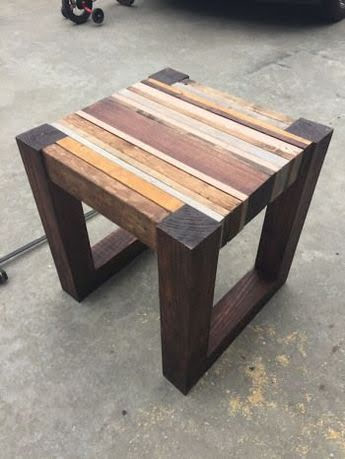Woodworking is a timeless craft that involves shaping and creating objects from wood. Whether you are interested in crafting furniture, decorative items, or intricate designs, woodworking can be a rewarding and fulfilling skill to learn. It allows individuals to express their creativity, relieve stress, and develop practical skills that can be applied to various projects.
Learning woodworking provides countless benefits beyond just the satisfaction of creating something with your own hands. It hones problem-solving abilities, enhances spatial awareness, and fosters patience and attention to detail. Additionally, it offers a sense of accomplishment when you see your finished piece come to life, making it a valuable skill worth investing time and effort into.
If you’re wondering where to learn woodworking, there are numerous options available for beginners eager to dive into this craft. From enrolling in classes at local community colleges or workshops to exploring online courses tailored to different skill levels, there are plenty of avenues for individuals to kickstart their woodworking journey. Whether you prefer hands-on learning or virtual instruction, the resources are out there for you to begin honing your woodworking skills.
Benefits of Learning Woodworking
Woodworking is not just about creating beautiful pieces of furniture or decor; it offers a plethora of benefits for individuals looking to explore their creative side, relieve stress, and acquire practical skills. One of the primary advantages of learning woodworking is the opportunity to unleash your creativity and bring your unique ideas to life through woodcraft.
Whether you are designing a custom bookshelf, crafting a dining table, or carving intricate patterns into wood, woodworking allows you to express yourself in a tangible and fulfilling way.
In addition to fostering creativity, woodworking has been shown to be an excellent stress-reliever for many individuals. The process of working with wood requires focus and attention to detail, which can help calm the mind and provide a sense of relaxation. Engaging in woodworking projects can serve as a form of meditation, allowing you to disconnect from the stresses of daily life and immerse yourself in a rewarding hands-on activity that brings joy and satisfaction.
Furthermore, learning woodworking equips individuals with valuable practical skills that can be applied in various aspects of life. From understanding the properties of different types of wood to mastering essential techniques like measuring, cutting, shaping, and finishing, woodworking offers a range of hands-on experiences that enhance problem-solving abilities and build confidence in one’s craftsmanship. These skills are not only useful for creating wood projects but can also be transferred to home improvement projects and DIY repairs.
Types of Woodworking
Woodworking is a versatile skill that encompasses various specialized areas, each with its unique techniques and tools. Understanding the different types of woodworking can help individuals determine their interests and preferences within the craft. Three primary types of woodworking include carpentry, cabinetry, and woodturning.
Carpentry
Carpentry is one of the most common forms of woodworking and involves building structures, such as furniture, homes, and decks. Carpenters work with a variety of materials, including wood, metal, and concrete, to create functional and aesthetically pleasing products. Skills in measuring, cutting, joining, and finishing are essential for carpenters to excel in their craft.
Cabinetry
Cabinetry focuses on creating custom storage solutions, such as cabinets, shelves, and wardrobes. Cabinetmakers utilize precise measurements and intricate designs to maximize space utilization while maintaining a visually appealing appearance. This type of woodworking requires attention to detail and proficiency in working with various hardware components like hinges and handles.
Woodturning
Woodturning is a specialized form of woodworking that involves shaping wood on a lathe to create rounded objects like bowls, vases, and spindles. Woodturners use chisels and gouges to carve the wood while it spins rapidly on the lathe. This type of woodworking requires patience and skill to master the art of creating symmetrical shapes and smooth finishes.
Understanding these different types of woodworking allows individuals to explore their interests and develop expertise in specific areas within the craft. Whether someone is drawn to the precision of cabinetry or the artistic freedom of woodturning, there is a type of woodworking that suits every preference and skill level.
Ultimately exploring various types will help beginners determine which specialization captures their interest before diving into more advanced projects within that niche.
Tools and Materials Needed for Woodworking
Woodworking is a fulfilling and rewarding hobby or skill that allows individuals to create beautiful and functional pieces out of wood. To begin your woodworking journey, it is important to have the right tools and materials at your disposal. Here is a list of essential tools and materials needed to start woodworking, as well as where you can purchase them:
- Handsaw: A handsaw is a versatile tool that can be used for cutting wood in various sizes and shapes.
- Chisels: Chisels come in different sizes and are essential for carving and shaping wood.
- Hammer: A hammer is crucial for driving nails and installing hardware onto your woodworking projects.
- Clamps: Clamps are necessary for holding wood pieces together while the glue dries to ensure a strong bond.
- Sandpaper: Sandpaper is used for smoothing out rough edges and surfaces on wood projects.
In addition to tools, having the right materials is equally important when starting woodworking. Here are some essential materials you will need:
- Wood: Different types of wood are available for woodworking projects, such as pine, oak, maple, and birch. Choose the appropriate type of wood based on your project’s needs.
- Wood Glue: Wood glue creates a strong bond between wood pieces, making it an essential adhesive for woodworking projects.
- Finishing Supplies: Finishing supplies such as stain, varnish, or paint are used to protect the wood and enhance its appearance.
When looking to purchase tools and materials for woodworking, there are several options available. You can visit local hardware stores or specialized woodworking shops to find high-quality tools and materials. Additionally, online retailers like Amazon, Woodcraft, Rockler Woodworking & Hardware offer a wide selection of tools and materials for all levels of woodworkers. Make sure to invest in good quality tools and materials that will last long and help you create beautiful woodworking projects.
With the right tools and materials in hand, you can start honing your woodworking skills and creating stunning pieces that showcase your creativity and craftsmanship. Remember that practice makes perfect, so don’t be afraid to make mistakes along the way as they are all part of the learning process in woodworking.
Where to Learn Woodworking
Woodworking is a timeless craft that allows individuals to create beautiful and functional pieces using wood as the main medium. Whether you are a complete novice or looking to improve your skills, there are numerous options available for where to learn woodworking.
One popular choice is to take classes at local community colleges, where instructors can guide you through the basics of woodworking techniques and safety protocols. These courses often provide hands-on experience with various tools and materials, allowing students to practice their newfound skills in a structured environment.
In addition to traditional classes, online courses have become increasingly popular for those looking to learn woodworking from the comfort of their own homes. Online platforms offer a wide range of courses tailored to different skill levels, from beginner tutorials to advanced projects.
These courses typically include video demonstrations, step-by-step instructions, and even interactive forums where participants can ask questions and share their work. By enrolling in an online woodworking course, individuals can learn at their own pace and schedule while still receiving valuable guidance from experienced instructors.
For those who prefer a more immersive learning experience, workshops provide an excellent opportunity to learn woodworking alongside other enthusiasts in a collaborative setting. Workshops may be held by experienced woodworkers or organizations dedicated to promoting craftsmanship and creativity.
Participants can expect hands-on instruction, group projects, and the chance to connect with like-minded individuals who share a passion for woodworking. Whether you choose a class at a local community college, an online course, or a workshop, there are plenty of options available for where to learn woodworking and start honing your craft today.
| Option | Description |
|---|---|
| Local Community Colleges | Structured classes with hands-on experience guided by instructors. |
| Online Courses | Flexible learning options with tutorials, videos, and interactive forums. |
| Workshops | Immersive learning experiences with group projects and collaboration. |
Tips for Beginners
Starting your woodworking journey can be both exciting and overwhelming, but with the right guidance, you can build a strong foundation for this rewarding craft. Here are some helpful tips for beginners, including safety precautions and basic techniques to get you started on the right track.
Safety First
Before diving into your first woodworking project, it is crucial to prioritize safety. Always wear appropriate safety gear such as goggles, ear protection, and a dust mask to protect yourself from potential hazards. Make sure your work area is well-ventilated and free from clutter to prevent accidents. Additionally, familiarize yourself with the proper handling of tools and equipment to avoid injuries.
Start With Simple Projects
As a beginner, it is recommended to start with simple projects that allow you to practice basic woodworking techniques. Choose projects that match your skill level and gradually challenge yourself as you become more comfortable with the tools and materials. Building a solid foundation through small projects will help you gain confidence and improve your skills over time.
Learn Basic Woodworking Techniques
Understanding basic woodworking techniques is essential for mastering this craft. Begin by learning how to measure and cut wood accurately using tools like a tape measure, saws, and chisels. Practice different joinery methods such as butt joints, dowel joints, and pocket holes to create sturdy connections in your projects. As you progress, experiment with wood finishing techniques like staining, painting, or varnishing to enhance the look of your creations.
By following these tips and continuously practicing your woodworking skills, you will soon find yourself creating beautiful and functional pieces that showcase your creativity and craftsmanship. Remember that learning woodworking is a journey that requires patience, persistence, and a passion for working with wood. Happy woodworking.
Success Stories
Woodworking is not just a hobby; for many, it is a life-changing skill that can bring immense satisfaction and personal growth. Learning woodworking can be a transformative experience, allowing individuals to unleash their creativity, relieve stress, and acquire practical skills that can be applied in various aspects of their lives.
Whether it’s crafting a piece of furniture from scratch or renovating an old item to give it new life, woodworking offers a sense of accomplishment that is truly rewarding.
For those who have immersed themselves in the world of woodworking, the benefits extend far beyond just creating beautiful pieces. Many individuals have reported feeling a sense of peace and tranquility when working with wood, as it allows them to focus their mind and channel their emotions into something tangible. The process of transforming raw materials into functional or decorative items provides a deep sense of fulfillment and pride in one’s workmanship.
One inspiring story comes from Sarah, a stay-at-home mom who discovered her passion for woodworking while attending a local community college class. What started as a way to pass the time quickly turned into a fulfilling hobby that helped her regain confidence and purpose outside of her role as a caregiver. Through woodworking, Sarah found a creative outlet where she could express herself and challenge her abilities.
Today, she runs her small woodworking business from home and has empowered many other women in her community to pursue their passion for woodworking. This goes to show that learning woodworking is not only about acquiring technical skills but also about personal growth and empowerment.
| Benefits | Details |
|---|---|
| Creativity | Woodworking allows individuals to unleash their creativity through designing and crafting unique pieces. |
| Stress-Relief | Working with wood has been proven to reduce stress levels and provide a meditative outlet for many enthusiasts. |
| Practical Skills | Learning woodworking equips individuals with valuable practical skills that can be applied in various projects and daily life tasks. |
Resources for Woodworking Enthusiasts
Woodworking is not just a practical skill, but also a rewarding and creative outlet that allows individuals to express themselves through the manipulation of wood. The benefits of learning woodworking go beyond just creating beautiful pieces of furniture or art – it can also serve as a stress-relief activity and help develop problem-solving skills. Whether you are interested in carpentry, cabinetry, or woodturning, the world of woodworking offers endless possibilities for creativity and personal growth.
For those looking to dive into the world of woodworking, it’s essential to have the right tools and materials to get started. From hammers and saws to chisels and sandpaper, having the proper equipment is crucial for a successful woodworking project. Local hardware stores or specialized woodworking shops are great places to purchase these tools. Additionally, online retailers offer a wide selection of woodworking materials for those who prefer shopping from the comfort of their homes.
When it comes to learning woodworking, there are several options available for enthusiasts eager to expand their knowledge and skills in this craft. Local community colleges often offer classes on woodworking basics, while online courses provide flexibility for those with busy schedules.
Workshops and seminars conducted by experienced woodworkers are also excellent opportunities to learn from professionals in the field. By exploring these various avenues, aspiring woodworkers can find the perfect fit where to learn woodworking that suits their needs and preferences.
Frequently Asked Questions
How Can I Teach Myself Woodworking?
Teaching oneself woodworking can be done through a variety of resources. Starting with basic tools, learning techniques through books, online tutorials, and practice projects can help develop skills. Joining woodworking forums or taking classes can also provide valuable guidance.
What Is the Difference Between Woodworking and Carpentry?
Woodworking is generally seen as a broader term that encompasses carpentry. Carpentry focuses more on construction and installation work, while woodworking involves crafting items from wood such as furniture, cabinets, and decorative pieces. Both require skill and precision but differ in their specific applications.
Can You Really Make Money Woodworking?
Yes, it is possible to make money through woodworking. Selling handmade items at craft shows, online platforms like Etsy, or local markets can be profitable. Creating custom pieces for clients or offering woodworking classes are other avenues to generate income from this craft.

Hi everyone! I’m a woodworker and blogger, and this is my woodworking blog. In my blog, I share tips and tricks for woodworkers of all skill levels, as well as project ideas that you can try yourself.





